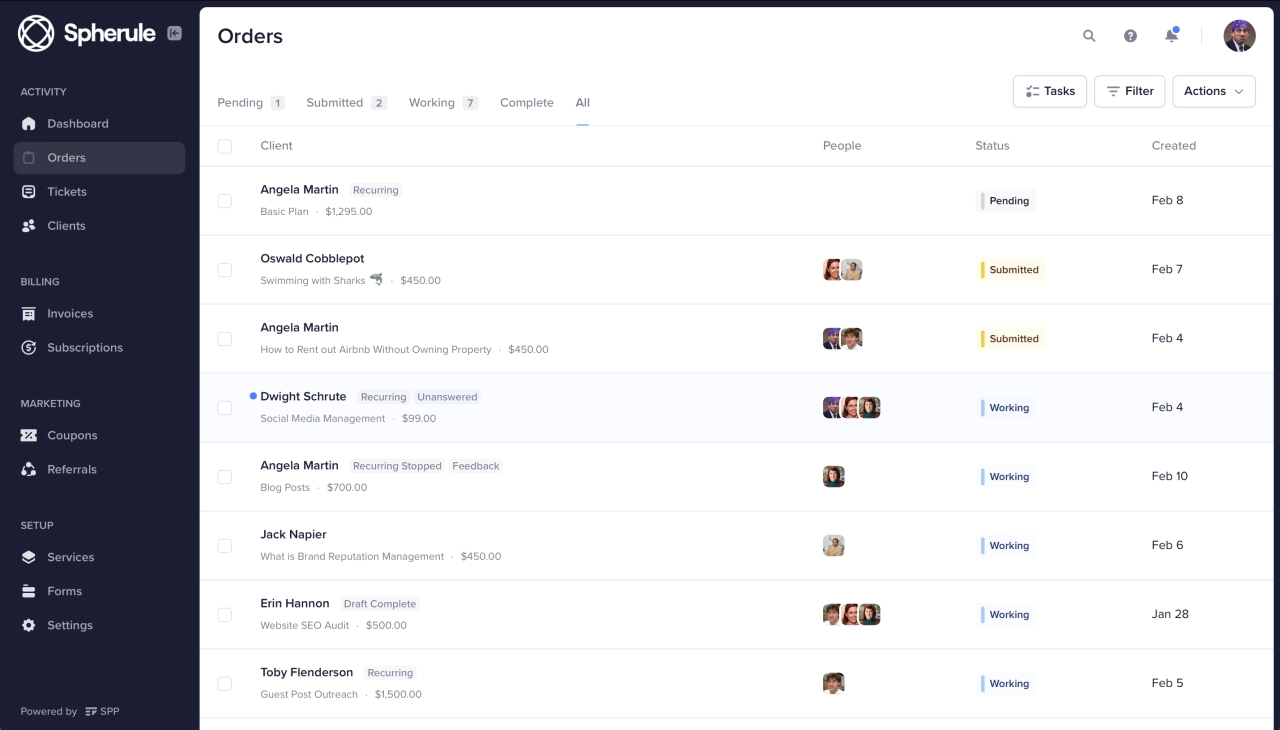- Cold calling has the potential to create conversations with potential customers and learn more about their pain points.
- Being friendly and human during calls can improve your chances of success by a considerable margin.
- To ensure the quality of leads, manually qualifying them and buying high-quality lists from reputable providers like ZoomInfo are recommended approaches.
If you’ve been around for a minute, you’ve probably heard the wide-open declaration of death on a number of business topics, particularly those related to customer lead generation. From search engine optimization to finding cold leads, sales funnels, entire megalith platforms, and age-old tactics—everything’s been dead and resurrected more passionately than zombies in movies.
You know the narrative, you’ve seen it a billion times before:
“Things have changed and that thing you’ve been doing for years is now dead. You should be doing [new thing] instead.”
Like it or not, cold calling has not escaped the untimely public obituary either. And while many rush to give cold calling their cold shoulder, most business leaders understand cold calling has a place (and a time) in the development of a company.
In other words, cold calling as your lead generation can be actually successful. When done right, that is.
How to do that? Here are some tips on how to do teach cold calling to your sales team.
What is cold calling?
First things first: what is cold calling, and why has it gained such a bad rap?
Simply put, cold calling is the process of making phone calls to potential customers to generate leads and sales opportunities. It’s defined as cold because your leads aren’t familiar with what you do or sell (or at least that’s the premise you start with).
In the past, cold calling was a popular means of lead generation because it was relatively easy and cost-effective—but like most things overused, cold calling started to get a bad name because it felt intrusive, aggressive, and too transactional.
That does not mean cold calling has gone cold. Not in the least—as you will see in the next section, cold calling is alive and kicking, and it can help you bridge gaps, discover opportunities, and create real conversations with potential customers. The difference between old-school cold calling (the one with the bad reputation) and the more modern approaches lies in data, the art of conversation, and the ability to build relationships.
Why cold calling works for lead generation
Let’s get this out of the way: when it comes to lead generation in B2B, cold calling works. It’s not for everyone, not for every type of company, and definitely not for every type of lead. But it works because it:
Allows you to have a direct, personal conversation with potential customers;
Helps you build relationships with leads who may not be aware of you, your product, or service;
Makes it possible to qualify leads without having to send a million emails back and forth; and
Uses a seemingly outdated form of communication (the phone call), but which actually sets a competitive advantage because it helps you (and your company) appear more human and trustworthy in the eyes of your leads.
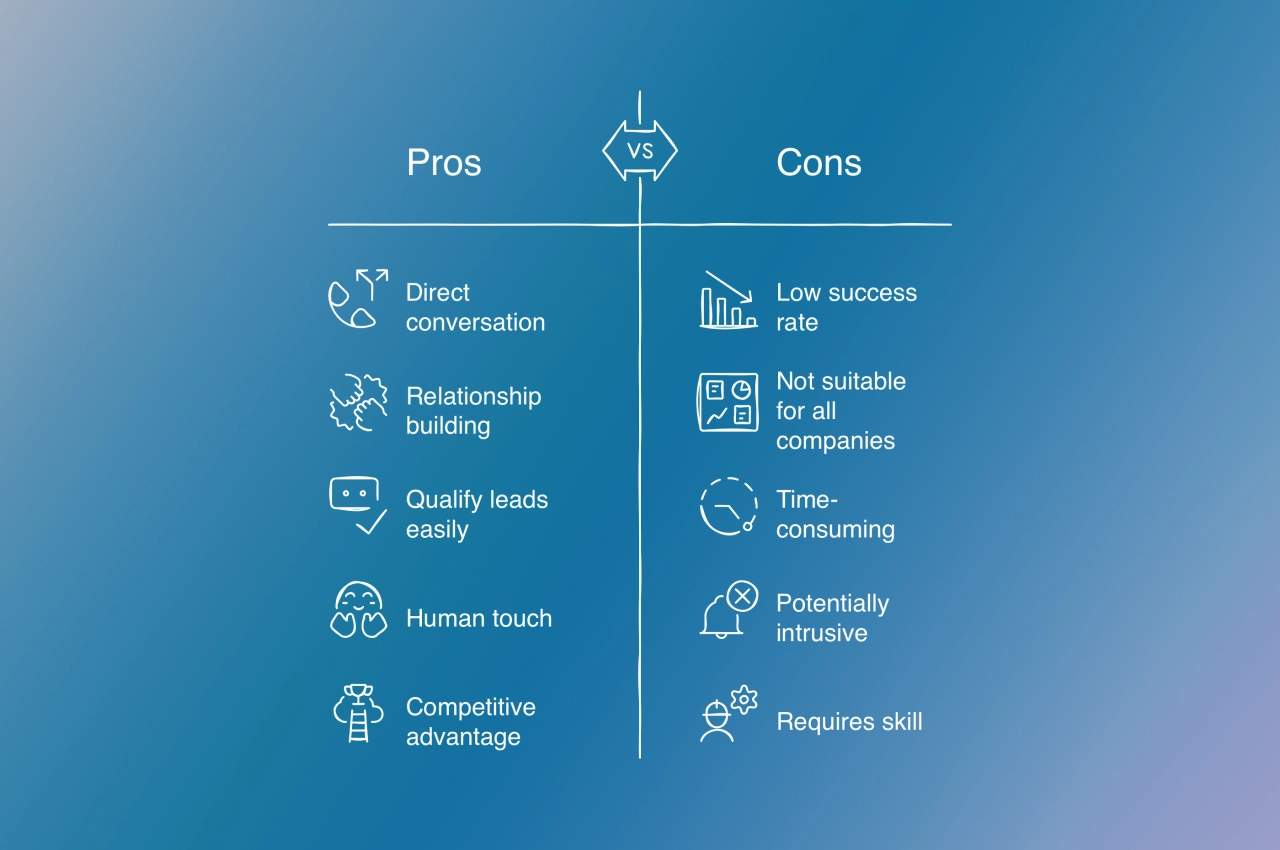
Stats don’t lie, if we’re looking at those published by Cognism: while the average cold calling success rate lies at a modest 2%, small adjustments to your approach and process can make a world of difference. For instance, simply asking your prospects how their day has been can boost your chance of winning a meeting with them by no less than 40%. And mentioning a common LinkedIn group can increase your chance of success by a whopping 70%. All in all, your success rate in cold calling can easily be promoted to a more than acceptable 10%—without any major changes in the process.
How to make sure the leads are of quality
Surprised by how effective cold calling can be?
There’s a catch: if you want to increase your baseline of success from the 2% average, you need to start from a good baseline of quality data. In other words, you need quality leads, and getting them is one of the biggest lead generation challenges.
With that said, it’s still important to veryify and improve your list. It’s better to work with one that contains 50 leads likely to buy from you than to waste your time on 5,000 prospects who are not primed to buy (and likely never will).
Here’s how to make sure your lead lists are what you need.
Manually qualify them
This is one of the oldest tricks in the book: if you want to make sure you spend your time with quality leads, you need to take the time and qualify them on your own. Manually qualifying leads may be time-consuming, but it ensures that you end up with prospects who are likely to convert—and therefore highly valuable. So whatever time you spend on sifting through lists of contacts is time well-spent, as it will set the ground for success later on in the process.
Buy a high-quality list (ZoomInfo)
One easy, quick, and reliable way to get quality leads is to buy a list from a high-quality list provider like ZoomInfo. These providers usually have access to more detailed data and keep their databases clean and up-to-date.
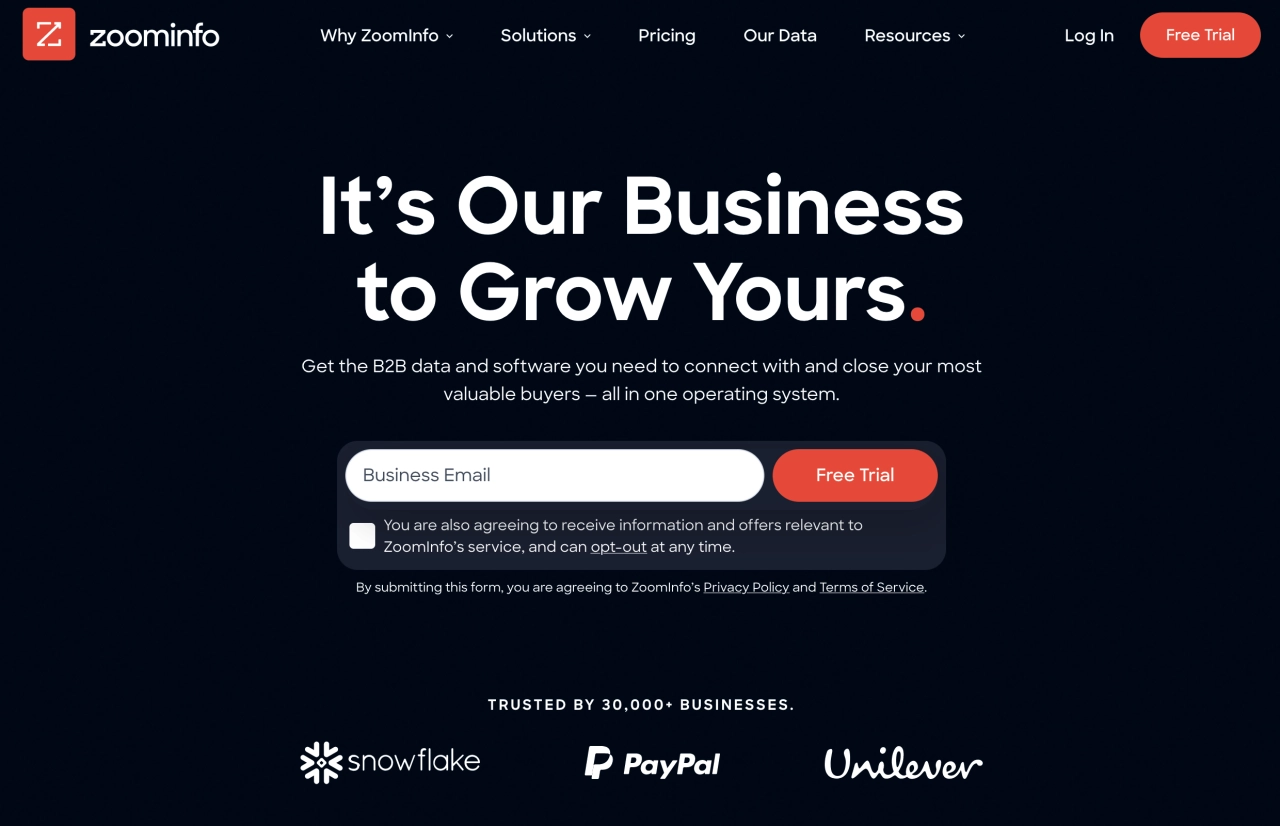
In other words, you don’t have to spend a century and a half to build a list—you can buy one, as long as you make sure:
the leads are qualitative
you follow data privacy regulations
and you don’t spam people
With your leads list at hand, you can almost start the cold calling process. But first, there’s one more step.
Qualifying leads with software
A reliable way to make sure you get quality leads is to use cold calling software that has a built-in qualification process. These tools have algorithms that automatically qualify leads, so you don’t have to go through them manually. You can then use the qualified list as a base for your cold calling campaigns.
Keep in mind that there are many different methodologies to qualify leads. Some still use the outdated BANT method, while a more modern NOTE approach is usually the better choice.
Technical tools for cold calling
Effective cold calling requires more than just a strong pitch; it demands the right technical tools to streamline processes and enhance customer interactions. Here are some key tools:
CRM systems: the hub of your sales operations
A customer relationship management (CRM) system serves as a central hub for storing contact information, logging calls, notes, and follow-up tasks, and tracking email interactions and social media engagement.
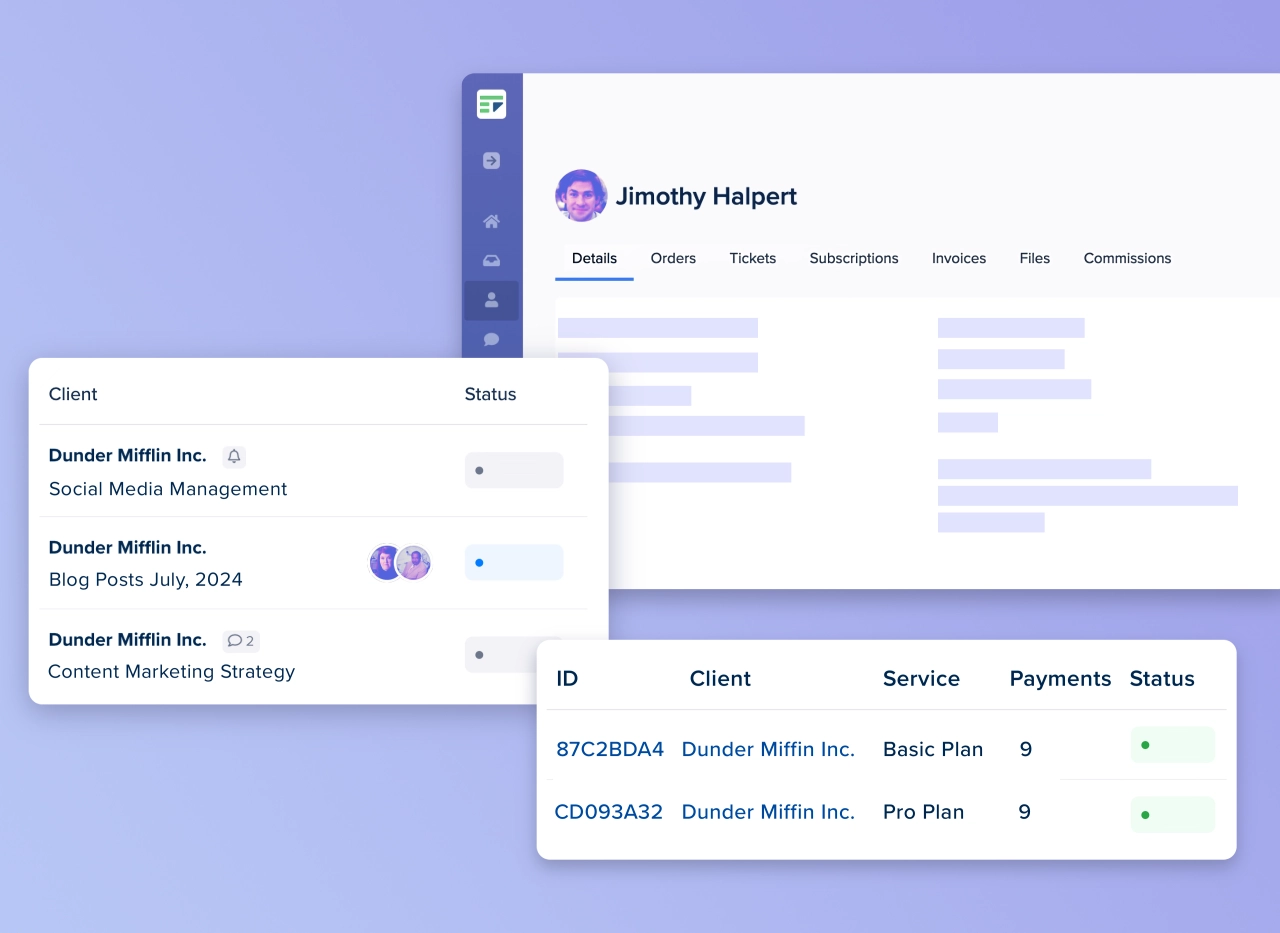
Keep all your client data securely stored in one place.
By leveraging a robust CRM system, you can efficiently manage your sales pipeline and make informed decisions about which prospects to target next.
Advanced dialers: boosting productivity with AI-powered technology
Advanced dialers use artificial intelligence (AI) to optimize cold calling campaigns. These tools provide predictive lead scoring, intelligent call routing, automated script suggestions, and real-time analytics on caller behavior.
Incorporating an advanced dialer into your sales strategy can increase response rates, reduce hold times, and enhance overall customer experience.
Call recording tools: quality control made easy
High-quality call recordings are essential for evaluating performance, identifying areas for improvement, and fine-tuning cold calling techniques. Call recording tools offer real-time monitoring, playback capabilities, and data analysis to track progress and refine scripts.
Investing in these technical tools will elevate your cold calling efforts and help build lasting relationships with potential customers.
Making use of cold calling services
If setting up all these processes and tools is too much for you, outsourcing cold calling services can be a game-changer. You’ll be able to tap into an expert’s industry knowledge to boost sales productivity, increase brand awareness, and enhance overall business performance.
Benefits of outsourced cold calling
By outsourcing cold calling services, businesses can enjoy significant time and cost savings. No more investing in expensive equipment or training staff; with a dedicated team handling the calls on your behalf, you can free up resources for high-leverage activities like product development and marketing. Additionally, outsourced cold calling teams provide instant feedback from prospects, allowing companies to refine their messaging and improve response rates.
Where cold calling services shine
Cold calling services are particularly beneficial when launching new products or testing new markets. For example:
A software company looking to expand into a new region can use an outsourced cold calling service to reach potential customers.
An e-commerce business wanting to increase brand awareness and drive sales can utilize a dedicated team for targeted outreach.
By leveraging the expertise of specialized cold calling services, businesses can achieve measurable results without sacrificing control or resources.
Cold calling scripts (template included)
If you’ve chosen to handle cold calling yourself instead of using services, having a reliable script or guide is essential for success. A well-organized approach ensures consistent messaging, reduces caller anxiety, and maximizes conversion rates.
A good cold calling script typically includes three key sections:
introduction
value proposition
call-to-action
This structure helps callers build rapport with prospects, clearly convey value, and encourage action.
As sales strategies evolve, many companies are moving from rigid scripts to flexible call guides. This change allows teams to quickly adapt to market conditions, adjust messaging on the go, and maintain a personal touch in their interactions. By adopting this flexibility, businesses can stay competitive and provide more personalized customer experiences.
Finally, here are three scripts you can adapt to fit your needs.
Introduction script
Hi [Prospect], my name is [Your Name] from [Marketing Agency]. I came across your company, [Company Name], and was impressed with the work you’re doing in [industry/niche]. Can I take just a minute to discuss how our team at [Marketing Agency] can help support your marketing efforts?
Value proposition script
At [Marketing Agency], we specialize in delivering innovative solutions that drive real results for businesses like yours. Our expertise includes [specific services, e.g., SEO, social media management]. By partnering with us, you’ll gain a competitive edge and increase brand awareness through targeted campaigns.
Problem-agitate-solve (PAS) script
Hi [Prospect], I’ve been working with clients in your industry for some time now. One common challenge we see is [specific pain point]. Are you struggling to stay ahead of the competition? Our team at [Marketing Agency] can help address this issue through our proprietary approach, which includes [key strategy or service].
Optimizing the cold calling process
Great scripts won’t be a guaranteed winner when it comes to cold calling. To maximize the effectiveness of your cold calling efforts, it’s crucial to optimize your process. A well-structured approach can help you achieve higher conversion rates, shorten sales cycles, and enhance overall performance.
Here’s a step-by-step guide:
Research: Identify target companies and prospects using data analytics or industry reports.
Qualification: Evaluate prospect suitability based on company size, industry, and job function.
Introduction: Initiate contact via phone or email to capture attention.
Value proposition: Present your unique selling proposition (USP) and emphasize benefits.
Needs assessment: Engage in conversation to understand pain points and requirements.
Follow-up: Schedule a meeting, demo, or trial based on mutual interest.
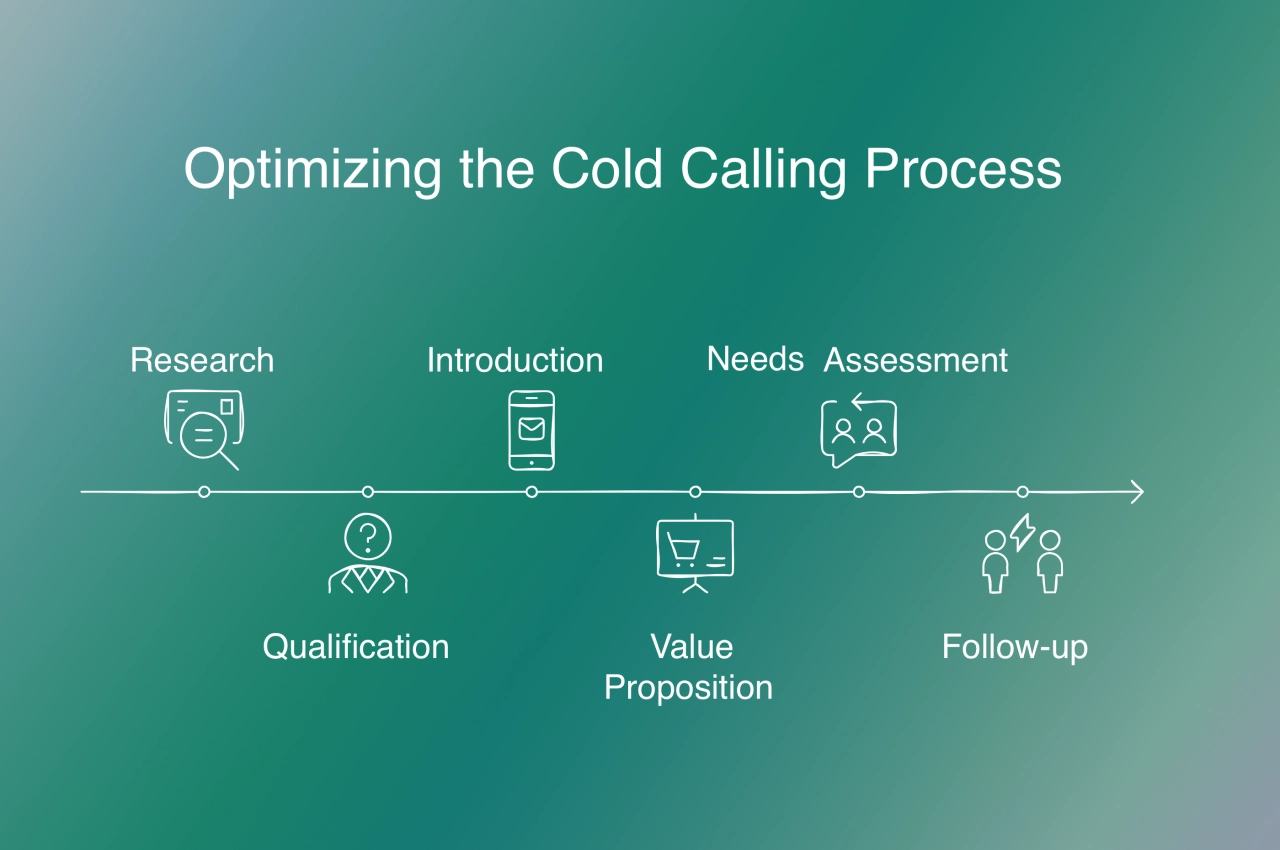
Success hinges on defining a clear next step after each call, ensuring prospects stay engaged and motivated throughout the sales process. Also, consider timing (such as scheduling calls during peak hours) and structure (like using an elevator pitch or starting with a question). By refining your cold calling approach, you'll be more effective in converting leads into customers.
16 tips to improve your cold calling skills
Think of your cold calling as a form of art. If good data is your canvas (base material) and passion for building human connections is your talent, the remaining 98% is all hard work and continuous practice. So make sure to keep nurturing your craft if you want to get the most out of it!
Prioritize quality over quantity: This is a cardinal rule in cold calling: don’t go after quantity if you can’t maintain quality. Quality should always come first—it’s better to spend more time on fewer leads and get higher success rates than to scatter your efforts wildly. One way to achieve that is, for example, to invest in a business cell phone numbers list rather than direct dials for a higher connect rate.
Practice your pitch: Make sure you practice your pitch by recording yourself and listening back to it. This way, you can identify your weak spots, improve, and make sure you’re delivering a quality pitch every time.
Be ready for objections: Objections are an inevitable part of the cold-calling process—preempting them is your best chance to succeed. So make sure you are prepared for whatever objections may come your way and practice how to answer them in a polite, professional manner.
Get them to say yes: Dale Carnegie wrote one of the most important books about building connections, How to Win Friends and Influence People. While there is a lot of priceless information in there, getting people to say yes from the get-go is one of the single most important tips. So make sure you structure your pitch correctly to get people to agree with you from the start. This will unconsciously prime their brain to say yes to the statements/questions you have—and even say yes to what you have to sell too.
Try different approaches: If a certain approach isn’t working, don’t be afraid to try something new. Experiment and see what works best for you: there isn’t a one-size-fits all approach to cold calling. The more you try, the more you know about what works and what doesn’t work with your particular target audience.
Focus on the human, not the lead: Remember, you’re trying to build relationships, rather than sell. Yes, a good sales quota at the end of the month or quarter is nice to have—but it’s worth near to nothing if your system is not scalable. And the way to make a system scalable is by focusing on human connections, rather than spreadsheet numbers—that’s how you build trust, open people’s minds, and eventually make sales.
Use the right tone of voice: It’s not only about the words you say, it’s also about how you say them. Make sure to communicate in a clear, confident voice. Speak slowly and make sure to emphasize the important words, but don’t overact either—no one likes an overly energetic salesperson!
Be persistent and consistent: Chances are you won’t win them over with your first call. So make sure you don’t give up after the first round of calls—be persistent and follow-up as much as you need to close the deal. Also, try to maintain a consistent approach throughout all your calls. Have specific pre-defined scripts, but also learn to be flexible to cater to each individual lead.
Keep track of your progress: It’s important to measure the effectiveness of every cold-calling campaign you undertake. What works, what doesn’t? What are your success rates? Where do the most successful leads come from? Once you have this data, use it to improve your approach and refine the process.
Engage in active listening: This is another important thing to remember: don’t just talk, take the time to listen. Many sales professionals make the mistake of talking too much and not taking the time to understand their leads. Active listening will help you pick up on subtle cues, identify potential objections, build trust with them, and adjust your pitch for future calls.
Know when to move on: Sometimes, it just isn’t working—and that’s fine. You don’t have to spend too much time on a lead that doesn’t seem interested, or take too much of their time. Have a set number of calls, and if they don’t warm up to your pitch after that, move on.
Be mindful of the timing: The time at which you call can play a major role in the success of your cold-calling campaign. Do some research to determine when is the best time to contact your target audience. For instance, recent studies state that cold calling done between 4 pm and 5 pm are 70% more successful. However, just because one study says this, it doesn’t mean it’s universal to everything and everyone—so test things you and find out what works best for you.
Never sound scripted: No one likes to be sold to by someone who reads from a script. So make sure you vary your pitch, making it sound natural and conversational, all the while keeping it professional and to-the-point.
Understand local regulations: Depending on the industry and location, there might be certain regulations you need to follow when it comes to cold calling. So make sure you understand local laws and regulations before embarking on a cold-calling campaign.
Understand customs: If you run cold calling campaigns internationally, it’s important to take a bit of time and read about the culture of your leads. This will help you avoid a faux pas, as well as build rapport with your prospects.
Be yourself: People can spot someone who’s fake, even through the phone. Being yourself is key to building trust with your leads and coming across as genuine. So be confident in who you are, and don’t be afraid to show them your personality.
Conclusion
Cold calling is no walk in the park. But with enough planning, willingness to spend time on research and refining, and plenty of patience, it can be an effective lead generation effort. Make sure that you train your sales reps and teach them how to be patient, understanding, and ultimately ensure that the leads are a good fit. Only then will you be able to warm up your leads. This is especially important in B2B sales as the decision-making process is long and nobody wants to buy a service/product they don’t really need.




